

Destinations
Experiences
 |
L A
D A T C O T O U R
S |
 |
||||||||
| HOME | South America | Falkland Islands | Antarctica | Unique Destinations |
Unique Experiences |
Newsstand | ||||
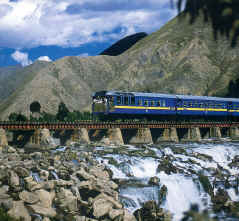 |
Titicaca Train
PeruRail Service
Click here for
VistaDome Cuzco-Machu Picchu |
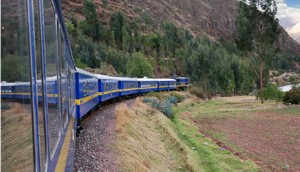 |
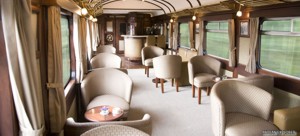
|
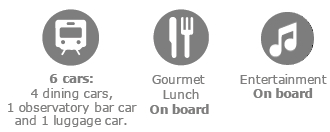
|
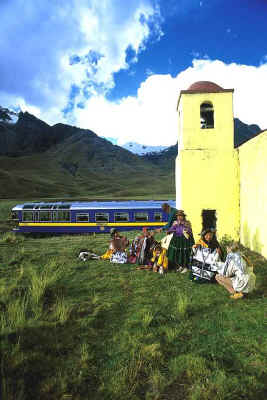 |
||||||||||||
ABOUT THE TRAIN - in words of PeruRail:
Enjoy the mysticism offered by the beautiful Peruvian Andean landscape aboard on our luxury train.
Riding the Titicaca Train is a unique experience, a journey between mountains and clouds, and between mountains and highlands. Ten hour train journey, which ends at the majestic Lake Titicaca and in whose path, the traveler will see the changing landscapes among mountains, rolling plains, and the various weather of the area.
|
THE ON BOARD SERVICE:
|
|
|
|
ABOUT THE JOURNEY - in the words of PeruRail:
- Cusco - The train departures to the southeast along the Hutanay river through green fields dotted with willow trees and eucalyptus trees across remote communities gathered around colonial churches.
- Km 25 - The train crosses Oropesa, a working community who is responsible, thanks to its forty-seven bakeries, to provide daily bread consumed in the imperial city.
- Km 32 - Before you reach the Lake Muina, the train turns left, crosses the valley road to reach Huambutio Vilcanota River, which plunges steeply into the gorge before widening to reach the Grand Canyon of the Urubamba.
- Km 40 - In Rumicolca we approached the great stone doorway of the same name, silent guardian of the southern entrance of Cusco in the Incas time. For the Wari culture, the predecessor of the Inca culture, it was served to channel water aqueduct from the picturesque Laguna from Lucre to the walled city of Pikillcta.
- Km 45 - We arrived at the Andahuaylillas church, one of the crown jewels of the colonial Cusco, with its magnificent murals and splendid paintings of religious themes.
- Km 59 - Urcos is, according to legend, the place where local bosses hided the Inca gold from the Spaniards and prevent their sacred objects from being merged into banal jewelry.
- Km 80 - The people of Cusipata and Checacupe (in Km 99) hide unexpected treasures of pre-Columbian and colonial origin, from pre-Inca and Inca ruins in a church whose origin dates from the seventeenth century.
- Km 120 - The train arrives at Raqchi, just before reaching the railway station of San Pedro, from where travelers can observe the remains of the great temple of Viracocha, the creator god in Inca mythology. Raqchi has been described by John Hemming as "probably the largest roofed building built by the Incas." Seventeen miles beyond San Pedro, the train stops in Sichuan, a bustling commercial island set in a plain landscape. Aymara women bring their products to this important picturesque village board taxis, tricycles.
- Km 186 Located in Marangi we can still find the house, where the wool barons hundred years ago established the only textile factory in the region "From here you start to leave behind the fertile hills of Cusco giving way to all known plains known as the Altiplano.The train continues its ascent for another 27 km past the thermal baths of Aguas Calientes to La Raya, 210 km from Puno. With 4.321 meters above sea level, this is the highest point of the trip, a cold and remote place, where a fine mist or rain often hide the spectral peaks and whose silence can be attributed to a dizzying height that blocks the eardrums of each traveler. After going through this huge shed, the train travels through a sea of seemingly endless pastures and remote villages that seem immune to the passage of time.
- Km 281 - The train reaches Juliaca, commercial town and railway center of around 150,000 inhabitants, whose unbridled trade appears sometimes spilling onto the tracks as the train continues its way through tissues and crafts sellers.
- Juliaca is the last stop on this journey through Andean culture before reaching to Puno (3.855 meters), a city that is built around an austere cathedral and that since its founding in 1668, expands on the banks subtly Lake Titicaca.